Leica X Vario: Autofocus Characteristics
Introduction | Some (Indicated) Failures | Dependency on Target Characteristics | Dependency on Previous Distance | Dependency on Focal Length
Archive
On this page, I would like to discuss some of the characteristics of the Leica X Vario's autofocus (AF) that I have discovered.
Introduction
Elsewhere on this site, I discuss occasional, unpredictable AF failures, which the camera indicates as correct focusing ("green" rectangle(s)). Here, the focus is on finding out more about the X Vario's AF behavior: This includes situations in which it signals that it could not find focus ("red" rectangle) as well as situations, in which the camera confirms focus ("green" rectangle) for one or the other, or for unknown reasons...
Some (Indicated) Failures
Usually, a contrast AF fails at uniform areas where there is little contrast. But there seem to be cases that surprise a little - or maybe not... One such case is that the uniformly colored field includes a horizontal line in the middle of the AF focus field (spot or 1-point AF). On the other hand, the Ricoh GR manual states that the GR's AF may fail (but confirms focus), among others, in the following cases:
- Objects that lack contrast (the sky, a white wall, the hood of a car, etc.)
- Flat objects with only horizontal lines
So, in this condition, both prerequisites for failure are met. Luckily, my X Vario signaled that it did not find focus ("red" rectangle).
I encountered this situation by accident when taking photos of the side of my car (white color) for three main focal lengths (28, 50, 70 mm equiv.) using spot AF as well as 1-point AF. In all cases, the camera signaled that it could not find focus ("red" rectangle). I also did a re-test with four main focal lengths (28, 35, 50, 70 mm equiv.) to verify my findings. Apart from a few spurious exceptions (28 mm, spot AF), I was able to confirm my initial findings.
When using 11-point AF, the camera found focus for all focal lengths, because there were plenty of object details to focus on.
Here are a few sample photos to illustrate my test setting:
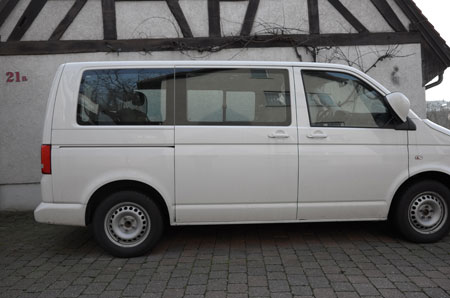 |
 |
 |
|
| Figures: Example photos taken with 28 mm (top left), about 50 mm (top right), and 70 mm (bottom left) using spot or 1-point AF. Important to note is that the dark horizontal line always was within the AF focus field for spot and 1-point AF, but the camera could not confirm focus. (All focal lengths are "equivalent".) | |
To sum up , I had expected that a horizontal line within a uniformly colored area would help the camera find focus, but obviously, it does not. As the Ricoh GR manual shows, this phenomenon seem to be known to camera manufacturers. I am not so sure, however, as to whether all photographers know this...
Dependency on Target Characteristics
Uniformly colored areas may prevent the camera from finding a focus target (it signals this by displaying a "red" rectangle). But in certain cases, the camera may confirm focus (by displaying one or more "green" rectangles) although one might think that the camera errs:
- Sometimes, I simply do not understand why the camera confirmed focus. Typically, the camera sets a too close distance. I deal with these cases on page Functional Issues - Autofocus (Tests). There are also cases, in which there are potential foreground targets, but these should not have distracted the AF system because they lie outside of the range of the target rectangle(s).
- Other wrong "green" confirmations, however, can be understood: While the camera's AF system was unable not recognize the intended target, it selected another one, typically in the background, and thus, set the distance too far.
Whereas the first case can be considered as a "camera problem" the second should not - at least, it should be analyzed carefully. Every contrast detection AF has difficulties with detecting certain target objects. You may consider such failures as a bug, but usually it should be regarded as a specific behavior of the camera's AF system, not as a bug (cameras may differ in their ability to detect such targets and you may, of course, debate whether the AF algorithms are implemented well or not so well...).
In the following, I would like to illustrate this point for the Leica X Vario with a few examples. Please note that this is just a "quick-and-dirty illustration," not a systematic test.
Contrast detection AF systems have issues not only with uniformly colored areas but also with small objects and thin lines (e.g. thin branches or blades). I found that this is regardless of whether the branches are oriented horizontally, vertically, or at an oblique angle (although horizontal lines are expected to present the greatest problems). In the following examples, I tried to focus on a thin branch or blade, but the camera always missed it, focused on the background, and confirmed focus - because it had found something, albeit not the target that I had in mind.
The camera found the focus target as soon as the object was somewhat more "extended", for example, when it included a junction or something else. Thus, my advice would be to look for more extended "substitute" targets that the camera can focus on and then change the section to take the photo.
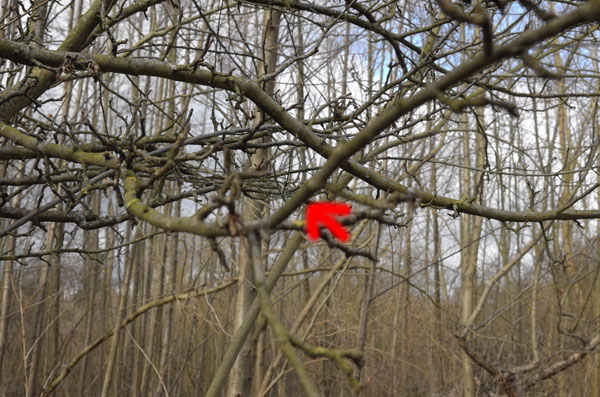
Figure: When the focus is on the branch, spot AF misses the target (1-point AF behaves similarly)
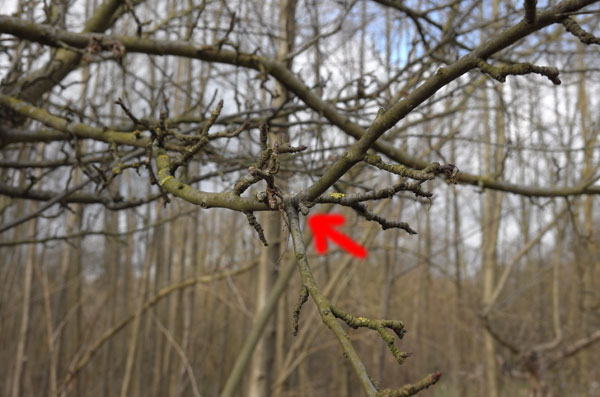
Figure: When the focus is on a more extended object, spot AF finds the target (1-point AF behaves similarly)

Figure: When the focus is on the blade, 1-point AF misses the target (spot AF behaves similarly)

Figure: When the focus is on a more extended object, 1-point AF finds the target (spot AF behaves similarly)
Dependency on Previous Distance
More or less by accident, I found out that the Leica X Vario's AF depends in certain situations on the previous AF setting. In a situation as described above, the camera always missed the target and focused on a background target. I repeated the focusing for a couple of times to no avail. Then, I decided to focus on a target at about the same distance as the intended target. After the camera had found this closer focus target, it was now able to repeatedly focus on the intended target.
The following photos just illustrate how a photo with missed target looks like and how one looks like where the focus is on the target:
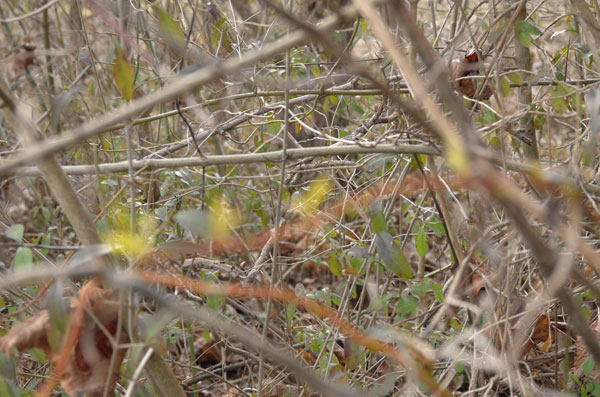

Figures: Spot AF missed the target (top), spot AF hit the target (bottom) (1-point AF behaves similarly)
I do not know the reason for this behavior, but it's good to know that it exists - and how one can get "out of the trap," namely by looking for a target at about the same distance as the intended target... Once you focused on that target, you may also be able to focus on the intended target.
Dependency on Focal Length
It is well known that when focusing manually, it is much more difficult to focus using wide angle lenses than tele lenses. The reason for this is that wide angle lenses have a huge depth of field, which does not allow for a "snappy" focus.
Initially, I was surprised when I observed that my Leica X Vario showed a similar behavior. But after thinking a little bit about it, why should this be different for AF systems and human users?
In my "accidental" test setting, I focused on a fairly uniform metal surface. I did so for the four main focal lengths (28, 35, 50, 70 mm equiv.) and using spot AF as well as 1-point AF. For 28 mm and 35 mm, the camera signaled that it could not find focus ("red" rectangle), while for 50 mm and 70 mm it signaled to have found focus ("green" rectangle), which was correct. I did a re-test to confirm my findings, and apart from some spurious "hits" at 35 mm, I got the same results.
As a take-away of this example, we might conclude that it may be advisable to focus using a long focal length and then to zoom down to the wanted focal length. Whether this is feasible or not, is another question...
Here are a few sample photos to illustrate my test setting:
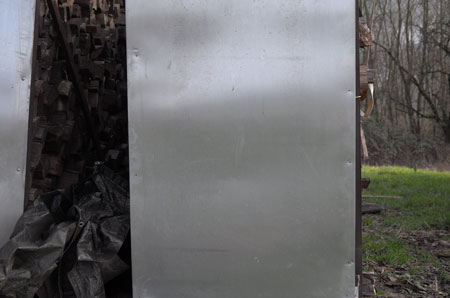 |
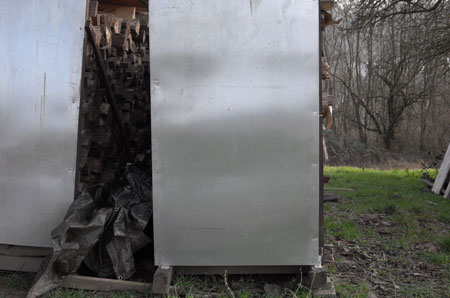 |
 |
 |
| Figures: Example photos taken with 70 (top left), ca. 50 (top right), ca. 35 (bottom left), and 28 mm (bottom right) using spot or 1-point AF. Important to note is that the camera could not confirm focus for the two shorter focal lengths. (All focal lengths are "equivalent") | |
| 03.04.2019 |